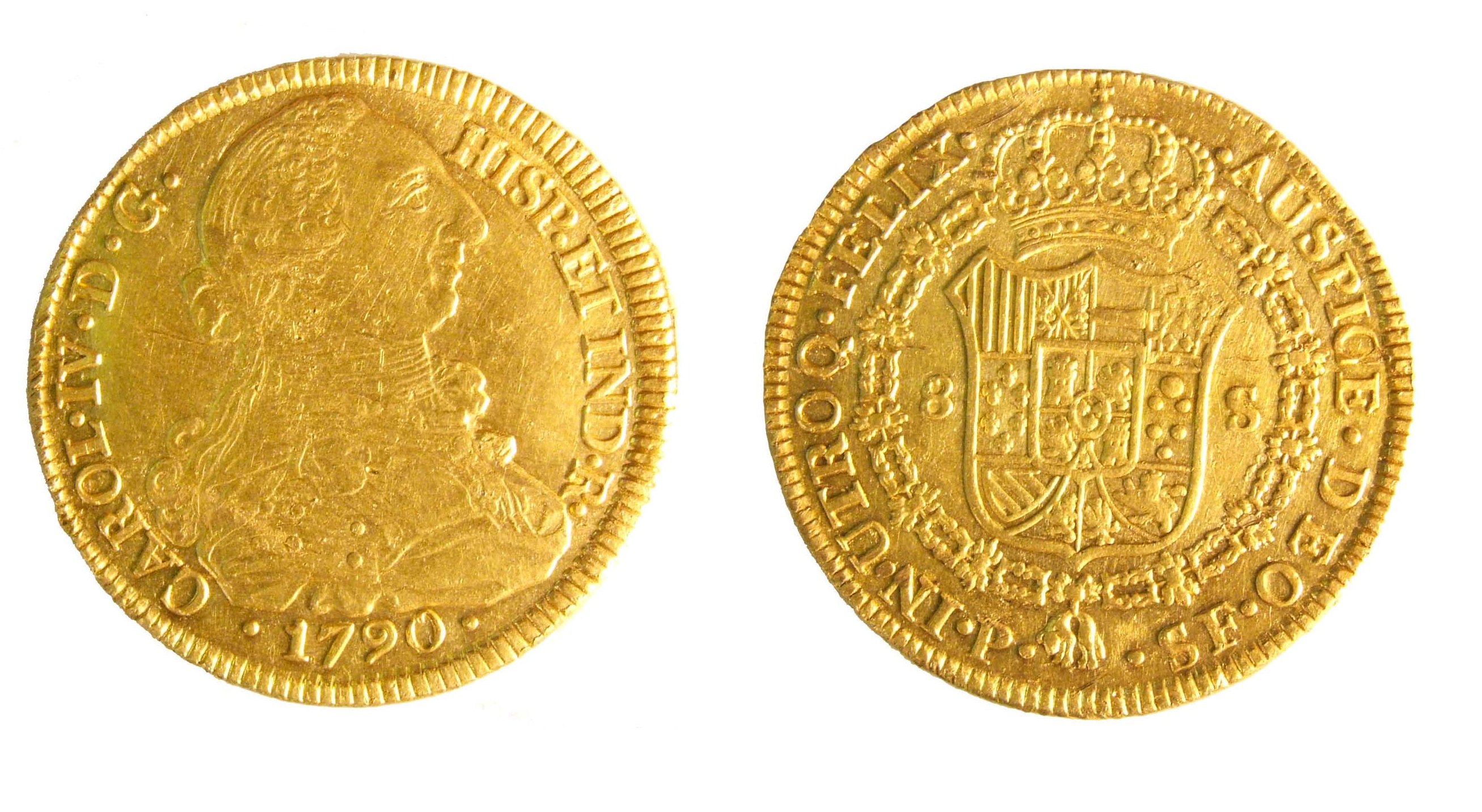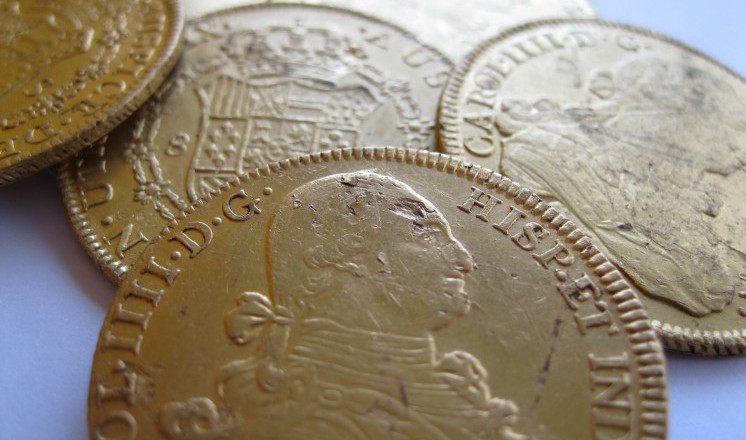Unique Spanish-American gold coins acquired
RSS FeedThe Collection is delighted to announce the successful acquisition of 6 Spanish-American gold coins found at Branston, and purchased after being reported under the Treasure Act 1996.
The 6 coins are part of a hoard that was first discovered as long ago as 1928, when 18 near identical coins were discovered. Following an inquest (held at the local pub), the original coins were split up. Although 5 are now in the British Museum, the rest went into private collections. The find is particularly significant as it represents the only known hoard of its type in Britain.
The coins are all gold and of a denomination known as the ‘8-escudo’, and were all produced under the Spanish King Charles IV. Even more unusually, the coins were minted in South America – two of the coins being produced in Chile, two in Colombia, one in Mexico and one in Bolivia. The coins date to between 1793 and 1801, which strongly suggests they were buried soon after, probably in 1802 or 1803.

The obverses (heads) of the coins show Charles IV in typical late 18th Century fashion and wearing a military uniform. The Latin legend surrounding his portrait reads ‘CAROLVS IV D.G. HISP. ET IND. R.’. This can be translated as ‘Charles IV, by the Grace of God King of Spain and India’.
The reverses (tails) of the coins show the Royal arms surrounded by a collar, which has the Golden Fleece (of classical mythology) hanging from the bottom. The legend around the edge reads ‘IN. UTRO Q. FELIX. AUSPICE. DEO’, which can be translated as ‘Under God’s will we will prosper.’
The discovery of these latest coins in 2010 brings the total known from the hoard up to 24, and brings back in to the spotlight an intriguing question – just why where they buried in a Lincolnshire field in the first place?
The date that they were buried is interesting in itself, as it was the time of the Revolutionary and Napoleonic Wars. The habit of hoarding coins was common up until the English Civil War in the 17th Century, but the wars with France saw a resurgence of people burying their wealth for safety. We must assume that this hoard was buried for just such a reason, but the owner never returned to collect it. The coins represented the equivalent of a few thousand pounds today – not an amount that someone would discard lightly. Perhaps some tragedy overtook the owner and prevented his or her return?
The coins are all of an identical type, and their close date range suggests that they were all acquired at the same time, perhaps as part of a business deal. The answer may lie with sheep trading. Lincoln Longwool sheep were traded throughout Europe and South America in the 19th Century, and particularly with Argentina, where they were cross bred with local sheep breeds. Perhaps the hoard represents the profits made by a Branston farmer from a sheep trade with South America? Further research will hopefully shed more light on the individuals involved.
The coins have been purchased with the kind assistance of the V&A Purchase Grant Fund, the Headley Trust and the Friends of Lincoln Museums and Art Gallery.
Comments
There aren’t any comments for this blog yet

